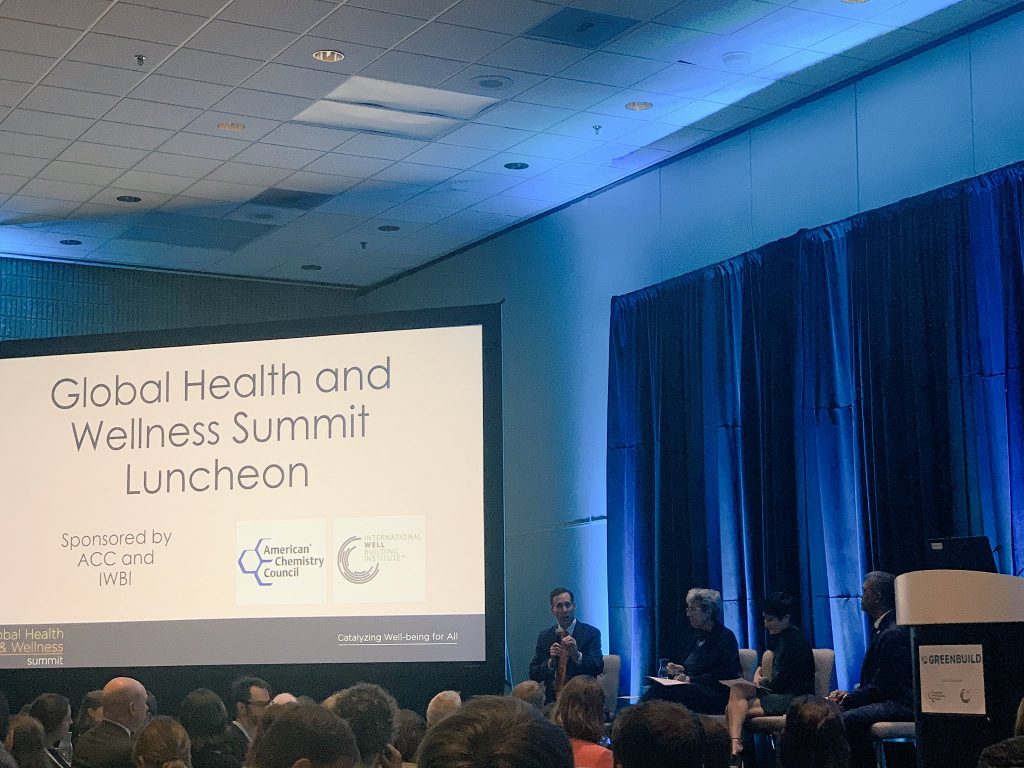
Throughout my career, I’ve been driven by a strong belief in the importance of collaboration and partnerships. For the past several years, ACC’s partnership with the U.S. Green Building Council (USGBC) has enabled our two organizations to work together to promote policies and initiatives that help improve the health, safety and sustainability of our buildings and communities.
That’s why I’m particularly pleased that one of my first public opportunities as ACC President and CEO, was the chance to participate in the first-ever Global Health and Wellness Summit, held earlier today at USGBC’s Greenbuild 2019 conference. At Greenbuild, product manufacturers, architects, designers, standard setters and others come together toidentify and champion solutions to improve resilience, sustainability and quality of life in our buildings and communities.
ACC co-sponsored this summit in partnership with the International WELL Building Institute (IWBI), to bring together stakeholders to discuss how we can work together to help advance holistic approaches to health and wellness in buildings, positioning materials science as a lens through which building design and operations decisions can be improved.
Progress and breakthroughs in materials science made possible by chemistry are the driver for the cutting-edge products and technologies that help advance our health and wellness.
And this is particularly apparent in the building and construction sector. The innovative products of chemistry – from energy-efficient foam insulation and silicone caulks and sealants that protect the building envelope, to durable, germ-resistant vinyl flooring, to plastic pipes that are virtually leak-free – provide numerous benefits that help enable green, sustainable buildings.
ACC and our members realize that there is still more to do, which is why we are seizing additional opportunities to work with others to advance practical solutions through public and private partnerships.
Sustainable design is about building the future, not just a structure. Effective sustainable design includes a comprehensive approach to selecting and integrating products and processes that account for human health, environmental protection and long-term occupant satisfaction.
The collaboration that ACC is undertaking with USGBC, IWBI and others will help drive measurable results, not only on advancements in sustainability, but also to provide practical solutions that will help improve the health, safety and fulfillment of people in buildings and communities around the world. I am committed to both extending and reimagining the chemical industry’s leadership role in the built environment. I look forward to working with these organizations and other leaders to help expand, advance and cement our industry’s role as a valued partner as we work together to address the world’s sustainability challenges.